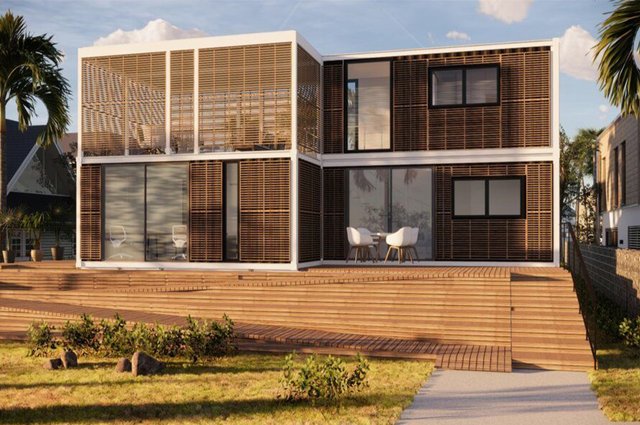Prefab Houses: A Quick, Affordable, and Sustainable Alternative-27-03-2025
Prefab houses are increasingly gaining popularity as a modern and efficient option for those looking to build a home quickly, affordably, and sustainably. Unlike traditional constructions, prefab houses are built in a factory or workshop and then assembled at the site where the home will be installed. This method significantly reduces construction time, making prefab houses an ideal option for those who want to move in a short time.

Advantages of Prefabricated Houses
1. Speed of Construction
One of the main advantages of prefab houses is the speed at which they can be constructed. Since they are prefabricated in factories, the parts of the house are produced simultaneously, reducing the overall construction time compared to traditional homes. While a conventional house can take months or even years to build, a prefab house can be ready in just a few weeks.
2. Energy Efficiency and Sustainability
Prefab houses are often designed with energy-efficient materials that help reduce energy consumption and lower long-term costs. Additionally, the manufacturing process has a smaller environmental impact, producing less waste and using more sustainable materials. Many manufacturers also offer prefab houses with renewable energy systems, such as solar panels, which further enhance their sustainability.
3. Lower Cost
Compared to traditional construction, prefab houses are generally more affordable. This is due to the efficiency of the production process and the reduction of labor costs, allowing homeowners to access quality housing at a lower price. It also reduces costs related to construction time, permits, and logistics.
4. Customization
While prefab houses are often associated with simpler designs, today, there is a wide variety of models ranging from modular options to luxury homes. Homeowners can choose from different styles, sizes, and materials, and many manufacturers offer the possibility to customize details such as interior design, space layout, and finishes.
5. Durability and Quality
Prefab houses are built to the same quality standards as traditional homes. In fact, the materials used in their construction are often more durable and resistant to weather conditions. Technological advancements have allowed for improvements in the quality and safety of these homes, making them a reliable and long-lasting option.

Disadvantages to Consider
While prefab houses have many advantages, there are also a few considerations to keep in mind. First, the land on which the house will be placed must be suitable, as some prefab houses require special foundations or a specific type of terrain. Additionally, some people still have reservations about the durability and aesthetics of these homes, although this is rapidly changing with advances in design and construction.
The Future of Prefabricated Houses
The future of prefab houses looks promising. With the growing focus on sustainability and energy efficiency, more people are opting for more eco-friendly and affordable housing solutions. Additionally, advancements in technology and design are allowing for the creation of increasingly sophisticated, accessible, and adaptable homes to meet the needs of homeowners.
In summary, prefab houses offer an excellent alternative for those looking for a quick, affordable, efficient, and environmentally friendly housing solution. Whether as a first home or as an option for those wanting to move without waiting months for construction, prefab houses are becoming a viable and attractive option for the future of construction.
